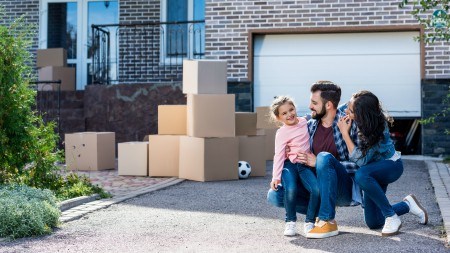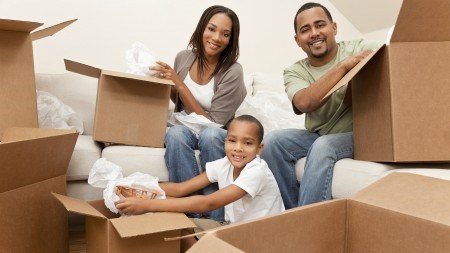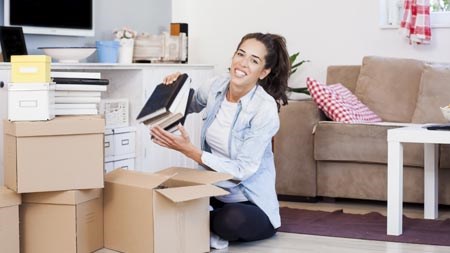The process of relocating to another home, neighbourhood, city, province, or country, is often accompanied by feelings of uncertainty, of loss and separation, and elevated levels of anxiety. Many moves are driven by significant life events such as retirement, empty nest syndrome, a divorce, a marriage, and family-building or growth.
To counter any feelings of anxiety, preparing to prepare to move is essential. The obvious first step is a checklist, and fortunately across the web are innumerable versions that you can download or be guided by. Finding the right one for your needs is probably the biggest challenge, which is why, for our top five tips to prepare to move, we also start with the checklist!
Checklist weekend
Whether you have months or weeks to prepare your move, compiling a checklist is crucial if you want a smooth or trouble-free moving day. While the actual move itself will fit easily into a weekend or a day or two, the preparation itself takes far longer. The checklist is your greatest organisational and time-saving tool, but finding the right checklist that covers your needs may be difficult or require you to combine a number of different checklists, as well as adding your own detail.
- TOP TIP 1: Put aside a weekend to source or create your checklist. Ask all members of the household to contribute and to give thought to any particular needs they have, or items to add that you may not have considered. Think of this checklist as a living document. You will add to it and delete items, as you achieve those goals.
Emotional ties
It is very important to give yourself time to prepare mentally for the move, while also ensuring that other family members’ mental health and emotional reactions are tempered. It starts with the primary caregiver, who must project the right attitude towards the move. If you are finding it hard to relax, feeling overwhelmed, depressed or unproductive, it’s time to get physical and engaged. Project the importance of social events, giving you and your family time to connect with the people in your neighbourhood that you won’t see as frequently. Decluttering also helps everyone, especially if you can make donations of unwanted items to charities, children’s homes and hospitals, which has a feel-good factor.
- TOP TIP 2: Be prepared to let go of things and emotional ties. Decluttering the mind comes from being organised, decluttering the home allows you to let go of attachments, and socialising with friends and family gives you time to take a breather from the move ahead.
The comfort box
This is often not included on the checklist but is a very important step of preparing ahead. Each member of the family should be given one box to fill with the things they will need on moving day. They will need to think carefully about what they put inside, They will need to think carefully about what they put inside and be encouraged to make a list. For young children it may be a special toy, nightlight, blanket, or a smart tablet etc. It can become a game, or a test to see how much they can fit into their box space, and helps with their understanding of what a move will entail.
- TOP TIP 3: The comfort box is not the same as an essential box (see below). Within the comfort box are things that are emotional stabilisers, which can encourage positive energies once the move has taken place. If some of those items engage the senses, even better; e.g., sweets, printed photographs, etc.
The essentials box
As you go about your daily life, think about what you do as routine. Associated with that are the things that need to go into an essentials box or boxes, and which you should plan ahead for. It is likely that you will need a kettle, tea/coffee, water, toothpaste and toothbrush/es, phone chargers, toilet paper, towels, snacks, meals and cooking pots, linen for beds, pet food and pet bowls, hairbrushes, medical kit, small toolbox, etc, broom, washing liquid, cloths, pens, papers, important documents, etc.
- TOP TIP 4: This is the first box/es you will open at your new home, enabling you to cater for small emergencies and the needs of the family, without having to scrounge around any number of boxes for the items you need. You may not realise how many needful things you use on a daily basis, which is why you should start becoming aware of them ahead of the move.
The photographic map
If you have ever installed electronic equipment yourself, you’ll know how confounding it can be to get plugs and sockets to match! It also doesn’t help that many such devices come with instructions that were translated poorly from another language. It makes sense, therefore, to start photographing all those complicated wires as they are in their current working condition. You might also consider marking those wires as well, which can be easily done with nail varnish so that you’ll know where the right wire and socket entry match, when you do the new installation at your new property.
- TOP TIP 5: Having a photographic map is one less thing to add to the checklist. You can also photograph valuable items in case they go missing or are damaged during the move. These photographs will be invaluable should you need to make an insurance claim later.




